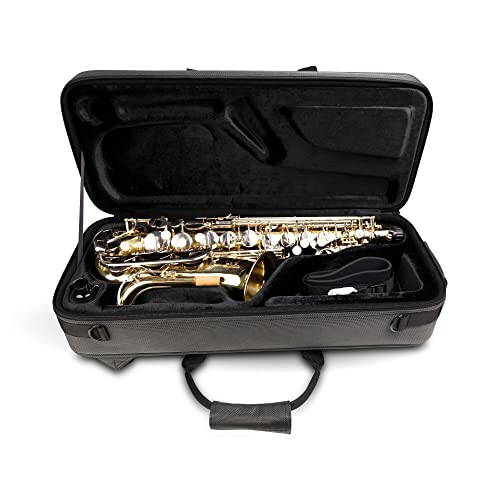
The Best Hard Cases vs. Soft Cases for Tenor Saxophones
Key Takeaways
- Hard cases offer superior protection but are generally heavier.
- Soft cases are lightweight and portable but may provide less protection.
- Consider your travel needs, style of play, and budget when choosing between hard and soft cases.
- Good maintenance of cases can extend the life and durability of both types.
Choosing the right case for your tenor saxophone is crucial for any player. Whether you're a beginner or an experienced musician, the type of case you choose can greatly affect how you transport and protect your instrument. This article will delve into the pros and cons of both hard cases and soft cases, helping you make an informed decision that suits your needs.
Understanding the Importance of Choosing the Right Case
A saxophone case is more than just a container; it is meant to protect your instrument from external damage while ensuring ease of transport. Whether you play jazz in a club or need to carry your saxophone to and from lessons, the right case can make a significant difference. Let’s explore the two main types of cases: hard cases and soft cases.
Overview of Hard Cases
Hard cases are traditionally favored for their solid construction and superior protection. Here are some important features to consider:
Pros of Hard Cases
- Exceptional protection from impact and damage
- Water-resistant materials in many models
- Durable zippers and latches
- Ideal for travel and outdoor use
- Often include compartments for accessories
Cons of Hard Cases
- Heavier compared to soft cases
- More expensive upfront cost
- Less flexible and bulkier to carry
Feature Highlight: Gator Cases Adagio Series Rectangular EPS Polyfoam Case
The Gator Cases Adagio Series Rectangular EPS Polyfoam Lightweight Case for Eb Alto Saxophone features a tough design that's lightweight, making it a great choice for players who want protection without the extra weight.
Gator Cases Adagio Series Rectangular EPS Polyfoam Case
This case combines a rigid frame with a plush-lined interior, perfect for safeguarding your tenor saxophone during transport.
More DetailsOverview of Soft Cases
Soft cases provide a different approach by prioritizing portability and convenience. Let’s analyze the key points for soft cases:
Pros of Soft Cases
- Lightweight and easy to carry
- More affordable options available
- Flexible and easy to store
- Usually come with comfortable straps for backpack-style carry
Cons of Soft Cases
- Less protection compared to hard cases
- May not be water-resistant
- Potential for damage if dropped or exposed to harsh conditions
Comparative Overview: Hard Cases vs. Soft Cases
| Feature | Hard Cases | Soft Cases |
|---|---|---|
| Protection Level | High | Moderate |
| Weight | Heavy | Light |
| Price Range | Higher | Lower |
| Portability | Less Portable | Highly Portable |
| Durability | Very Durable | Vulnerable to wear |
How to Choose the Right Case for Your Needs
Selecting between hard and soft cases largely depends on your personal needs and preferences. Consider these factors:
- Travel Frequency: If you frequently transport your saxophone, a hard case may be preferable.
- Performance Setting: Opt for hard cases for outdoor or traveling performances, while soft cases can work well for local gigs.
- Budget: Weigh the initial cost against potential long-term protection of the instrument.
- Storage Space: Soft cases require less storage space compared to bulky hard cases.
Maintenance Tips for Your Saxophone Case
To extend the life of your saxophone case, keep these maintenance tips in mind:
- Regularly clean the exterior with a damp cloth.
- Check zippers and straps for wear and tear, repairing or replacing as needed.
- Store your case in a dry, temperature-stable environment.
- Avoid placing heavy items on top of your case.
- Use additional padding inside the case for added protection.
Conclusion
Choosing between a hard case and a soft case for your tenor saxophone is an essential decision that hinges on your specific needs as a musician. Both types of cases come with their unique set of advantages and disadvantages. Invest time in evaluating your own travel habits, storage needs, and budget to ensure you make a choice that best protects your instrument. Whether you opt for the robust protection of hard cases or the portability of soft cases, the right choice can enhance your musical experience while ensuring your saxophone remains in pristine condition.
To learn more about saxophone accessories or explore various options, check our saxophone accessories article and refine your choices further!
